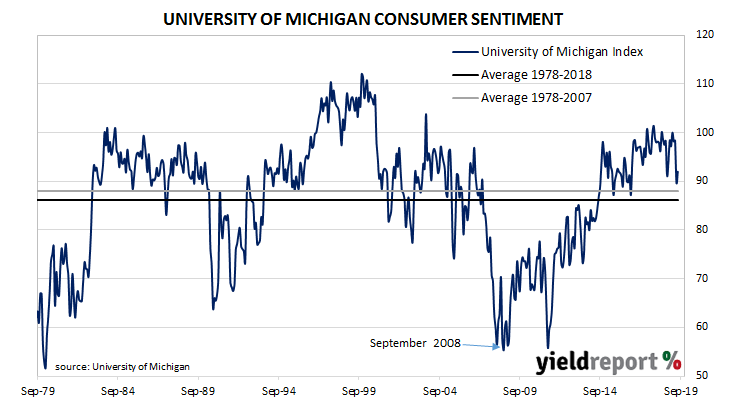US consumer confidence had started 2019 at well above average levels in a longer-term context, although it was markedly lower than the more buoyant readings which typified most of 2018. After rebounding from the falls of January and February, US households then maintained a historically high level of confidence until it plummeted in August.
The latest survey conducted by the University of Michigan indicates the average confidence level of US households has increased a little after its August plunge. The University’s preliminary estimate of its Index of Consumer Sentiment rose from August’s figure of 89.8 to 92.0 in September, ahead of the consensus figure of 90.2.
The University’s Surveys of Consumers chief economist, Richard Curtin, said the increase was narrowly driven. “While the uptick was across both current and expected economic conditions, the early September rebound was not widespread across age or income subgroups as it only fell among consumers under age 45 and among households with incomes in the top third; these two groups account for about half of all spending.”
He also noted a general expectation by households of a rate cut from the US Fed, stating “These expectations are likely to diminish the impact on spending from a quarter-point rate cut, but if rates remain unchanged, it may increase negative reactions by consumers.” Tariffs and their impact on the US domestic economy also remained a concern.

